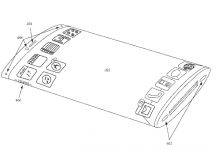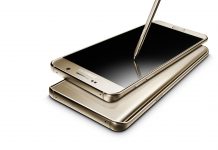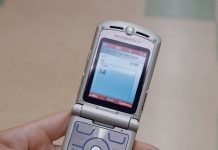 Wowio‘s free PDFs of e-books are tough viewing, right now, on my Sony Reader. But as Wowio designer Gerry Manacsa makes clear, he’s at least unofficially on the case—with a planned purchase of his own Sony.
Wowio‘s free PDFs of e-books are tough viewing, right now, on my Sony Reader. But as Wowio designer Gerry Manacsa makes clear, he’s at least unofficially on the case—with a planned purchase of his own Sony.
Meanwhile, Paula Wellings, who describes herself as “a user experience practitioner at Wowio,” has been exploring how e-books from her company might work out on the iPhone. Check out her thoughts and prototype images and Gerry’s ideas, as well as those from a very different kind of book-related company, O’Reilly, where Tim O says that “iPhone-friendly Web sites” display better than PDFs.
So what’s the lowdown at other publishers? Claire and colleagues? Rob? Anyone else? Feel free to share you own impressions—on the iPhone as a present and future e-book reader—which we can publish either as comments or in the main part of the blog. Got any iPhone-related plans, personally or corporately? If you go by the present results of our unscientific sample, 46 percent of TeleBlog readers are planning to buy iPhones, and e-books are among the uses in mind in many cases.
Current challenges
Prior to any “magic” updates of text-related software on the Apple, here are “a few big challenges” as Paula sees them:
“1. It is currently pretty weird that documents, such as pdfs, can be viewed both landscape and portrait in the Safari browser but only in portrait if accessed through the document viewer via email…which right now is the only reasonable way to get files on to the device that don’t go away if you go off-line. This means that you can have one ebookish type experience with an emailed pdf and a different experience with a browser downloaded pdf.
“2. Email is the only reasonable way to get files on to the device that don’t go away if you go off-line.
“3. Navigating books by finger scrolling and manually zooming feels like the act of a rather desperate person. Also quite messy, if you like to read and eat popcorn at the same time. Next page/previous page buttons and automatically sizing to the width of a block of text would be most lovely.
“4. Bookmarking.”


































What is a page? How big should information chunks be? You could read a lot of things on mobile devices and/or PDAs, but the scrollbars and Next Screen bar needs to be used often.
The print paradigm gets us accustomed to 250-300 word pages, but really is there any psychological basis to this preference?
Apart from the hardware issues with the Sony Reader, I am comfortable with the amount of information presented on a page with small or medium font. (I don’t care how good the resolution may be).
Robert, my pref is perhaps 250-300 words on the Sony. There’s another interesting issue besides info size. I’d hate having to scroll, and yet some programmers would prefer e-readers that way–both for their use and others. I’m opposite. I lack cites, but I believe studies have shown that people very much prefer pages. I can recall a teacher saying that was a MUST for an e-book reader. Will be interesting to see what others have to say. – David
I think horizontal scrolling is a killer (as in negative). Talk about distraction. With vertical scrolling, it’s really useful that the scroll be easy. The Mobipocket Reader/Sony Reader/eBookWise Reader model of one screen per click is intuitive and easy. If a reader has to scroll down a bit and worry about scrolling too far, that would be trouble.
I don’t have an iPhone (yet??–note to Apple, I’d be happy to receive a unit, complete with paid service plan) but if you downloaded an HTML eBook, would it go away just because you went off line? Wouldn’t it stay open until you closed it? That’s the way I would program it. So, you could download the book, read it, and leave it open until you were done with it wherever you were. Just a thought.
At BooksForABuck.com, we do offer straight HTML eBooks (along with other formats) specifically because HTML is a lowest common denominator. Whatever proprietary applications your reader requires, most of them have the ability to deal with HTML.
We do offer PDF, and I have to say it’s a popular download. I personally don’t understand this since flowability is absolutely critical to me as a consumer.
Rob Preece
Publisher, http://www.BooksForABuck.com